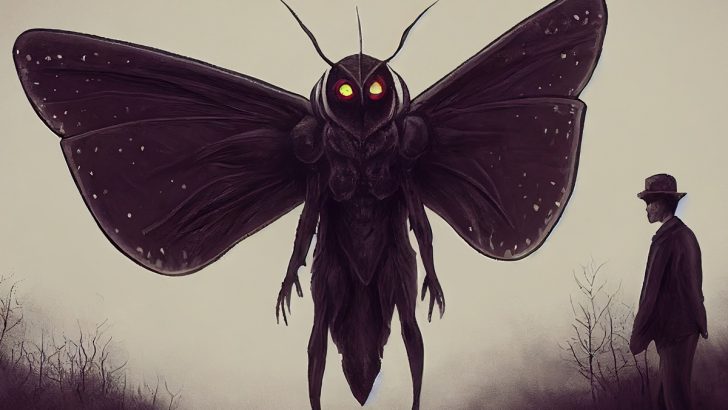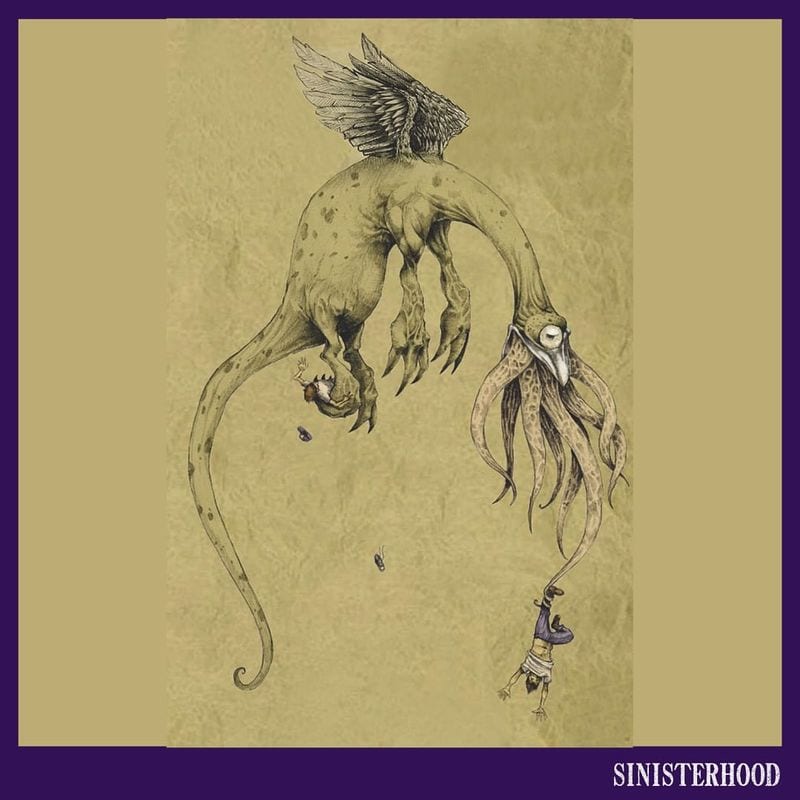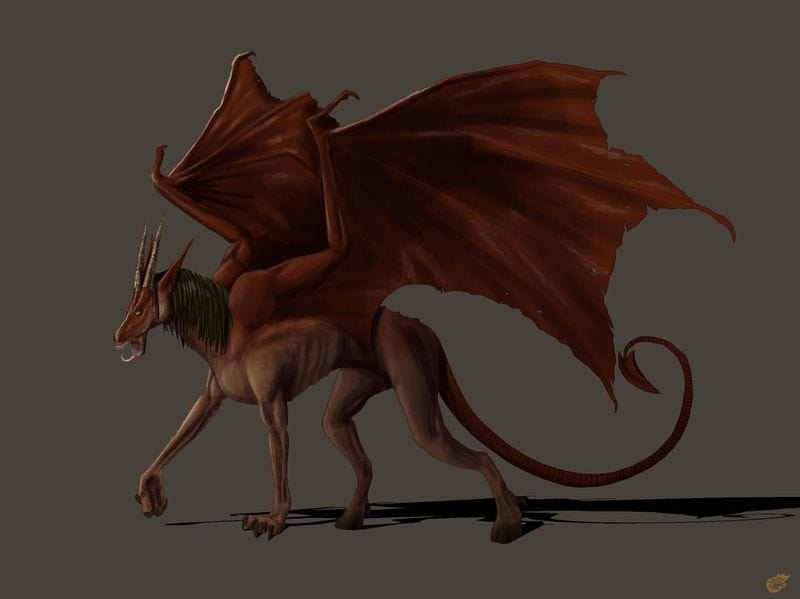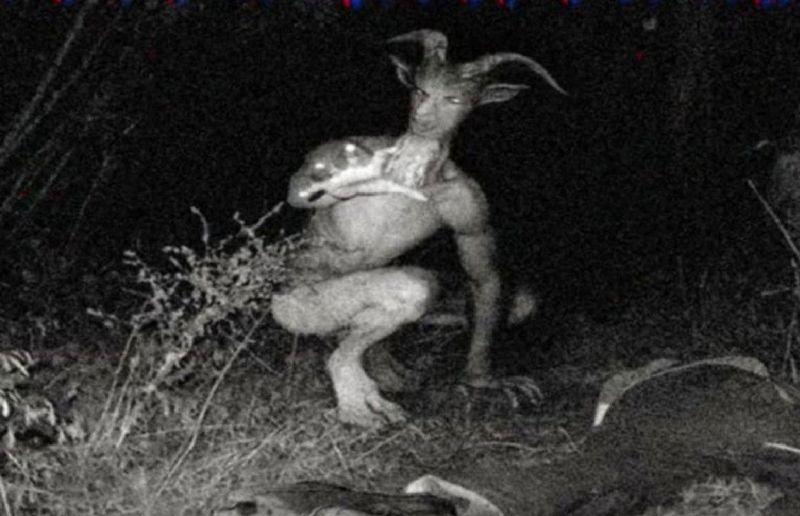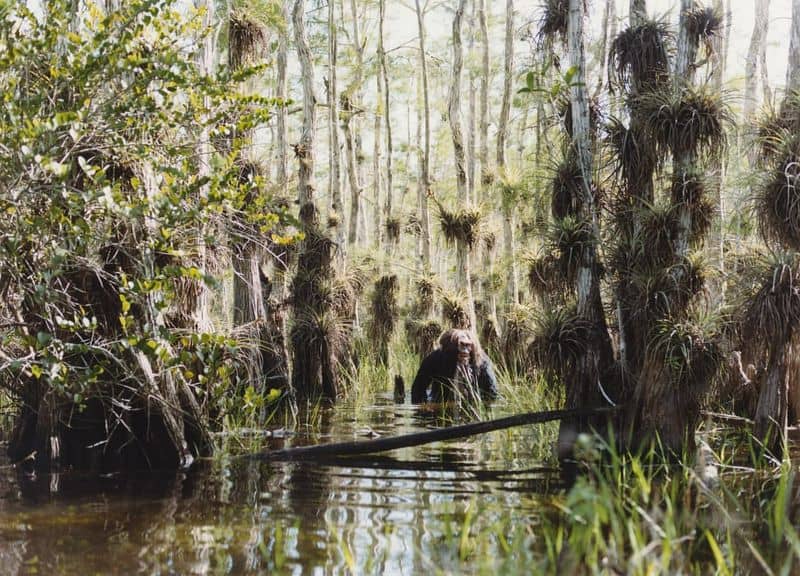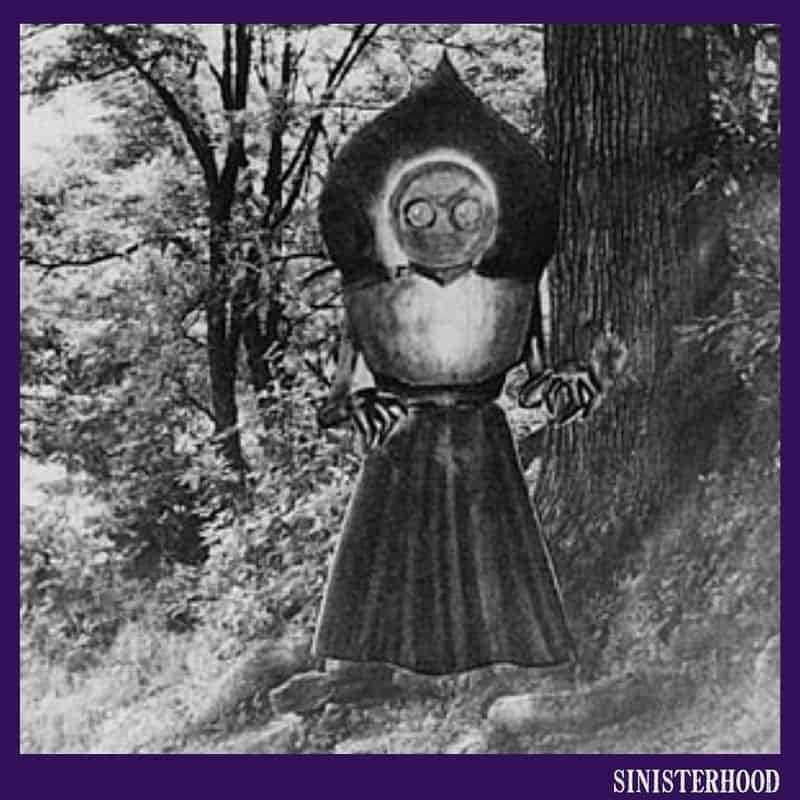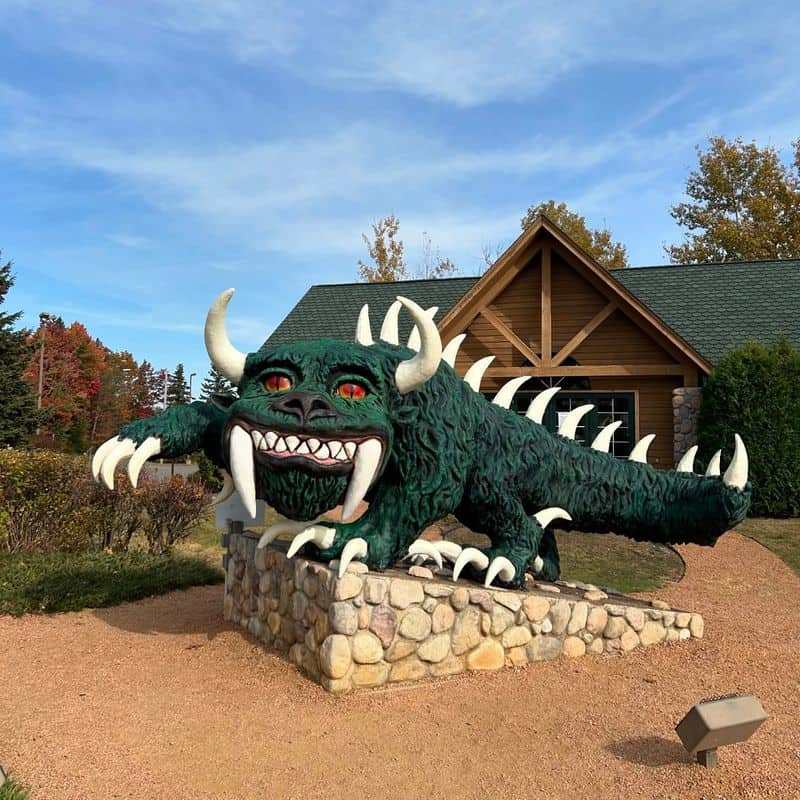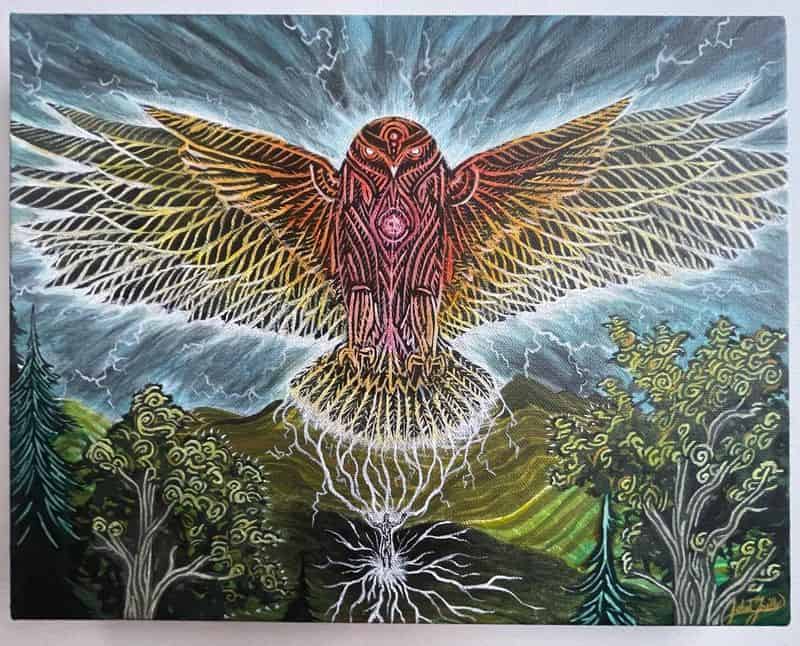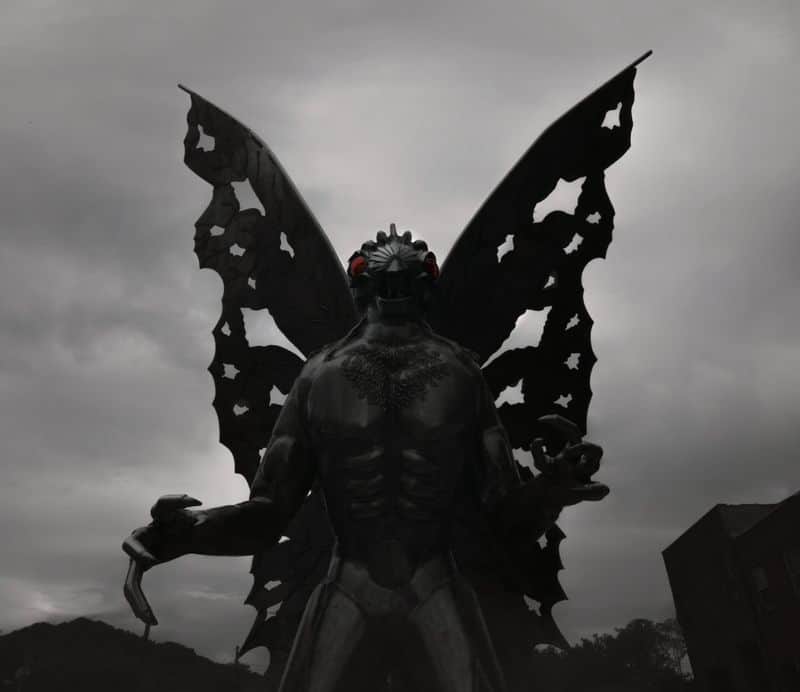American folklore brims with mysterious creatures that have captivated generations of storytellers.
These fantastical beasts emerged from a blend of Native American legends, European immigrant tales, and the vast, untamed American wilderness that sparked countless campfire stories.
From swamp-dwelling monsters to flying terrors of the night sky, these ten creatures represent America’s unique contribution to the world of mythical beasts.
1. The Snallygaster: Maryland’s Flying Terror
Half-bird, half-reptile with a metallic beak lined with razor-sharp teeth, the Snallygaster has haunted Maryland skies since the 1700s.
German immigrants first spoke of this silent predator swooping down to carry off livestock and unwary travelers. The creature’s name comes from the German term “schneller geist” meaning “quick spirit.”
Newspaper reports in the early 1900s described it having octopus-like tentacles and a bloodcurdling scream. Frederick County residents once feared this winged menace so deeply that they avoided traveling after dark, believing the beast preferred hunting beneath the moon’s glow.
2. Jackalope: The Horned Rabbit of the West
Born from the creative minds of Wyoming taxidermists in the 1930s, the jackalope hopped into American folklore as a jackrabbit sporting deer antlers.
Brothers Douglas and Ralph Herrick created the first specimen after tossing a rabbit carcass next to deer antlers and imagining the combination. Tall tales quickly spread about these critters – they could mimic human voices to confuse cowboys and could only be caught during thunderstorms.
Douglas, Wyoming proudly claims the title “Jackalope Capital of the World,” complete with hunting licenses (valid only between midnight and 2 AM on June 31st).
3. Jersey Devil: The Pine Barrens Phantom
Lurking in New Jersey’s Pine Barrens since 1735, this nightmarish creature emerged from a peculiar birth story. Mother Leeds, pregnant with her thirteenth child, allegedly cursed the baby to be a devil – and so it became, transforming at birth and escaping up the chimney.
With a horse-like head, bat wings, cloven hooves, and a forked tail, the Jersey Devil terrified locals for generations. In 1909, mass hysteria erupted when hundreds claimed sightings across the state.
Schools closed, factories shut down, and vigilante groups formed to hunt the creature during what became known as “Jersey Devil Week.”
4. Goatman: The Mad Scientist’s Mistake
Roaming the forests near Beltsville, Maryland, the Goatman represents science gone horribly wrong. Legend claims he was once Dr. Stephen Fletcher, a researcher at the Agricultural Research Center whose experiment with goat DNA backfired catastrophically.
Half-man, half-goat, this axe-wielding monstrosity supposedly attacks teenagers in parked cars and decapitates pets. Locals report hearing inhuman screams and finding mutilated animal remains.
The creature gained notoriety in the 1970s when newspaper reports linked it to mysterious dog killings. Today, Fletchertown Road remains a popular destination for thrill-seekers hoping to glimpse this scientific abomination.
5. Skunk Ape: Florida’s Fragrant Bigfoot
Florida’s swamps harbor a cousin to Bigfoot with one distinctive difference – an overwhelming stench resembling rotten eggs mixed with methane. Standing seven feet tall and covered in reddish-brown hair, the Skunk Ape navigates boggy terrain where humans fear to tread.
Seminole tribes spoke of this creature long before European settlement. Modern witnesses describe it knuckle-walking like a gorilla and sleeping in hollow cypress trees.
The infamous “Myakka photographs” from 2000 show what appears to be an ape-like creature in the Everglades, reigniting interest in this malodorous mystery that continues to elude definitive proof despite hundreds of annual sightings.
6. Wendigo: The Winter Cannibal Spirit
Born from the harsh northern winters, the Wendigo emerged from Algonquian tribal beliefs as a cautionary tale against cannibalism. According to Ojibwe, Cree, and other Native American traditions, humans who consumed human flesh during famines transformed into these gaunt, towering monsters.
The creature stands fifteen feet tall with glowing eyes, skeletal features, and antlers or horns protruding from its skull. It suffers perpetual, insatiable hunger – the more it eats, the hungrier it becomes.
Early European settlers adopted these stories, blending them with their own folklore. “Wendigo psychosis” became a documented psychiatric condition where individuals craved human flesh during isolated winter months.
7. Flatwoods Monster: The Extraterrestrial Visitor
On September 12, 1952, the small town of Flatwoods, West Virginia encountered something truly otherworldly.
Following a bright object that crashed nearby, locals discovered a towering figure with a spade-shaped head, glowing eyes, and a mechanical-looking body emitting a noxious gas. Witnesses reported feeling ill after the encounter, suffering nausea and throat irritation for days.
The creature hovered above the ground before suddenly shooting upward and disappearing. While skeptics suggest an owl perched on a tree branch created an optical illusion, the “Green Monster” became a cultural phenomenon. Today, Flatwoods celebrates this visitor with an annual festival and roadside attractions.
8. Hodag: Wisconsin’s Fearsome Forest Dweller
The lumber camps of northern Wisconsin buzzed with tales of the Hodag – a creature with the head of a frog, face of an elephant, spikes along its spine, and a pitchfork tail.
Lumberjack Eugene Shepard claimed to capture one alive in 1893, displaying it to paying crowds. Shepard’s Hodag had supposedly been stunned with chloroform after lumberjacks discovered its weakness – a fondness for lemons. The creature’s favorite meal? White bulldogs, consumed whole.
When Smithsonian representatives traveled to investigate this biological marvel, Shepard confessed to his elaborate hoax. Despite this revelation, Rhinelander, Wisconsin embraced the Hodag as its official symbol and beloved mascot.
9. Thunderbird: The Storm Bringer
Majestic and terrifying, the Thunderbird soars through Native American mythology as a supernatural being capable of creating storms with its massive wings. Various tribes across North America share legends of these enormous birds whose eyes flash lightning and whose wingbeats create thunder.
In the 1890s, Arizona newspaper reports claimed two cowboys killed a creature resembling a pterodactyl with a 160-foot wingspan. The alleged photograph, known as the “Tombstone Thunderbird,” has never been conclusively found.
Modern sightings persist, with witnesses describing birds with 15-20 foot wingspans. Some cryptozoologists theorize these could be surviving pterosaurs or giant condors previously thought extinct.
10. Mothman: The Winged Prophet of Doom
Point Pleasant, West Virginia residents reported a terrifying figure in 1966-67: a seven-foot tall, gray humanoid with hypnotic red eyes and enormous wings.
The creature, dubbed “Mothman” by a creative newspaper editor, was spotted repeatedly before the Silver Bridge collapsed, killing 46 people. Some believe Mothman appeared as a warning, while others consider it the cause of the disaster.
Reports described the being flying at speeds exceeding 100 miles per hour without flapping its wings. The legend inspired John Keel’s book “The Mothman Prophecies” and a subsequent film. Today, Point Pleasant celebrates its infamous visitor with an annual festival and a 12-foot stainless steel statue.

